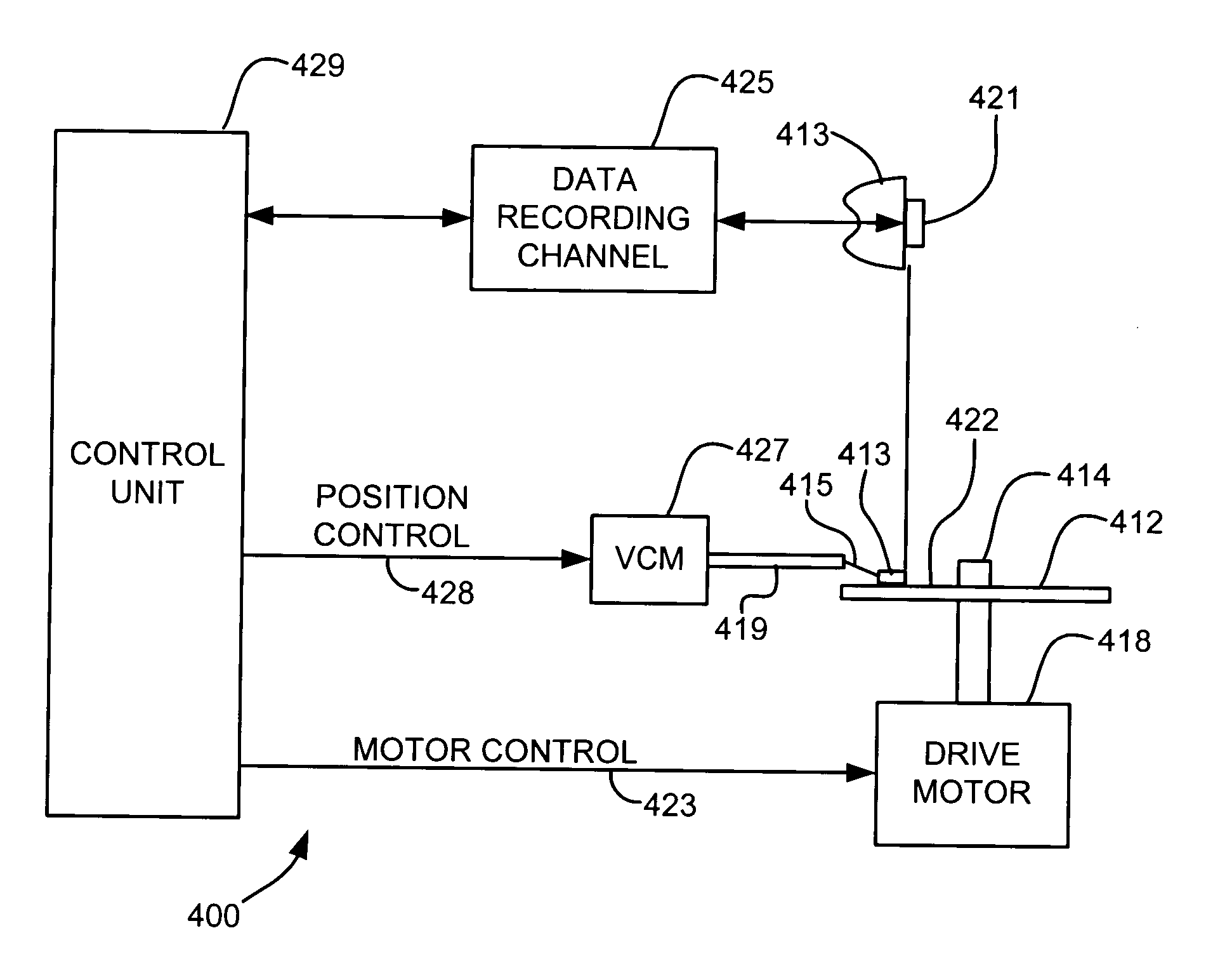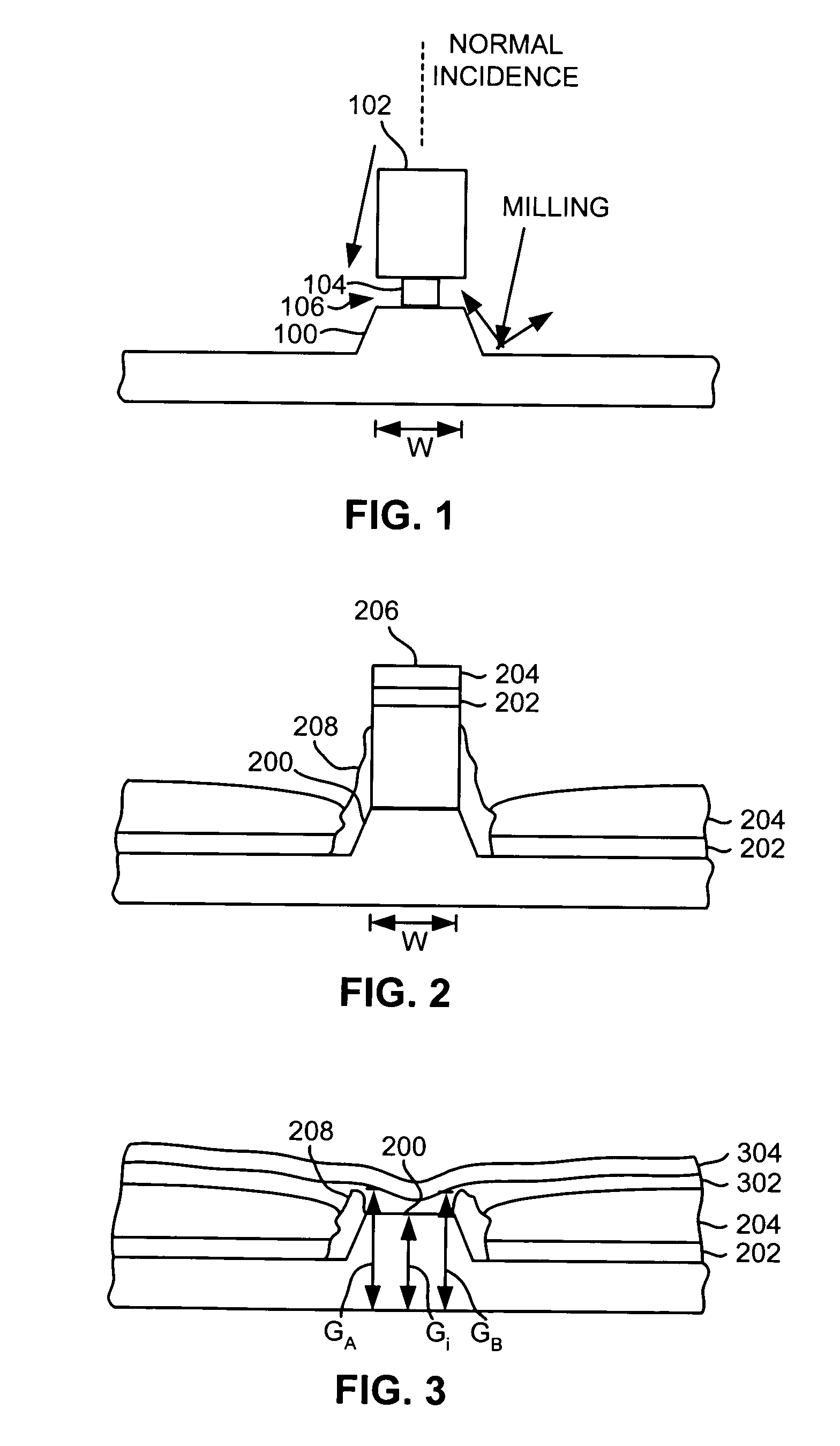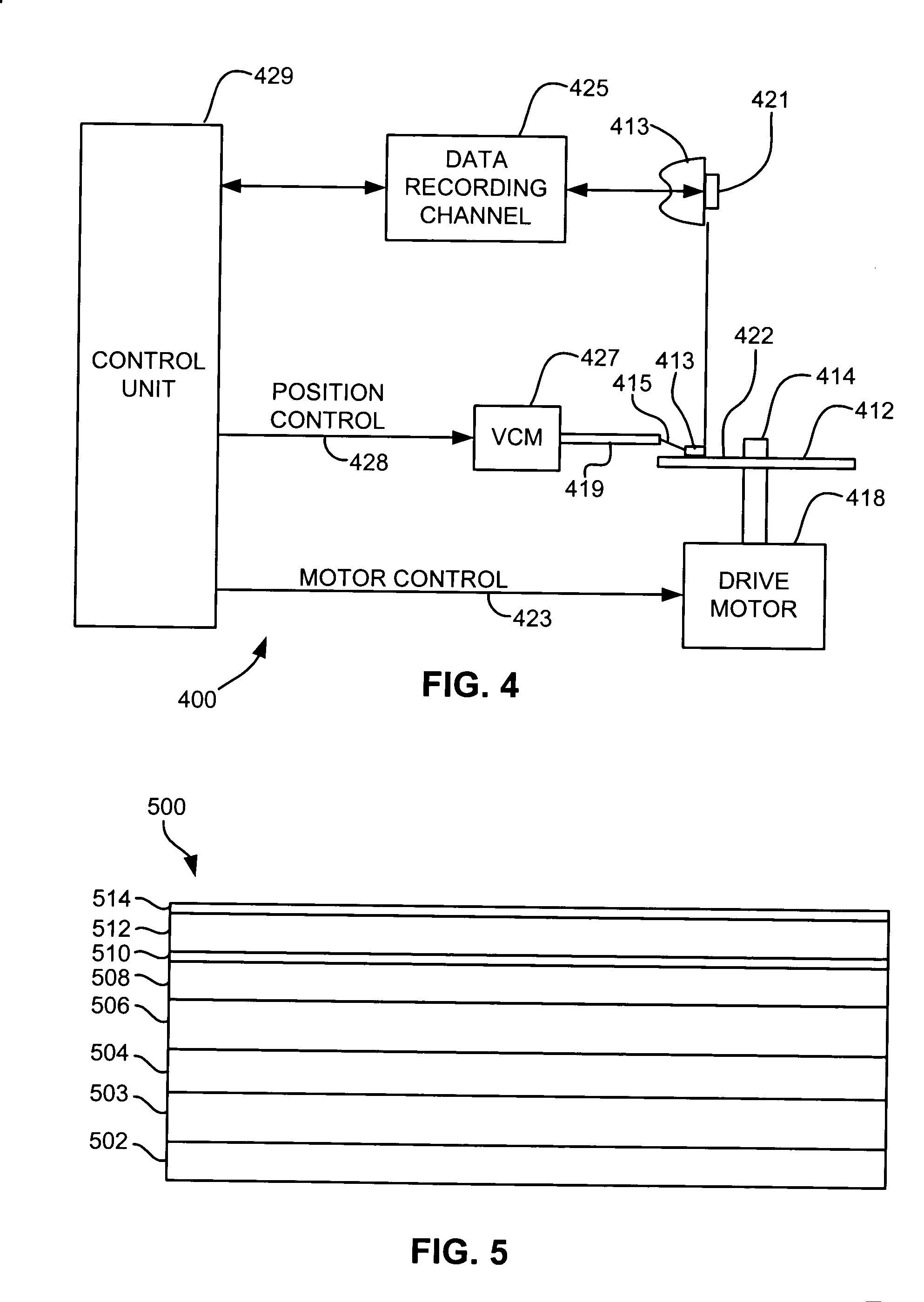Method of fabricating electronic component using resist structure with no undercut
a resist structure and electronic component technology, applied in nanoinformatics, instruments, record information storage, etc., can solve the problems of increasing sensor resistance, unable to reliably perform a trackwidth below 130 nm, and reaching the limit of the bilayer resist process
- Summary
- Abstract
- Description
- Claims
- Application Information
AI Technical Summary
Benefits of technology
Problems solved by technology
Method used
Image
Examples
Embodiment Construction
[0026] The following description is the best embodiment presently contemplated for carrying out the present invention. This description is made for the purpose of illustrating the general principles of the present invention and is not meant to limit the inventive concepts claimed herein.
[0027] Referring now to FIG. 4, there is shown a disk drive 400 embodying the present invention. As shown in FIG. 4, at least one rotatable magnetic disk 412 is supported on a spindle 414 and rotated by a disk drive motor 418. The magnetic recording media on each disk is in the form of an annular pattern of concentric data tracks (not shown) on disk 412.
[0028] At least one slider 413 is positioned adjacent to the disk 412, each slider 413 supporting one or more magnetic read / write heads 421. More information regarding such heads 421 will be set forth hereinafter during reference to the remaining FIGS. As the disks rotate, slider 413 is moved radially in and out over disk surface 422 so that heads 4...
PUM
| Property | Measurement | Unit |
|---|---|---|
| incidence angle | aaaaa | aaaaa |
| width | aaaaa | aaaaa |
| structure | aaaaa | aaaaa |
Abstract
Description
Claims
Application Information
 Login to View More
Login to View More - R&D
- Intellectual Property
- Life Sciences
- Materials
- Tech Scout
- Unparalleled Data Quality
- Higher Quality Content
- 60% Fewer Hallucinations
Browse by: Latest US Patents, China's latest patents, Technical Efficacy Thesaurus, Application Domain, Technology Topic, Popular Technical Reports.
© 2025 PatSnap. All rights reserved.Legal|Privacy policy|Modern Slavery Act Transparency Statement|Sitemap|About US| Contact US: help@patsnap.com



